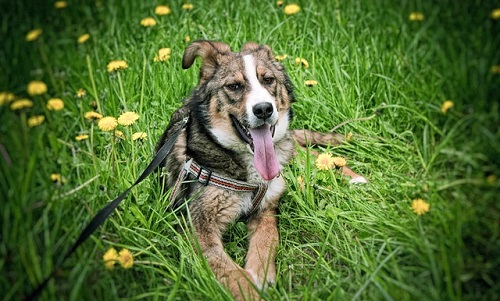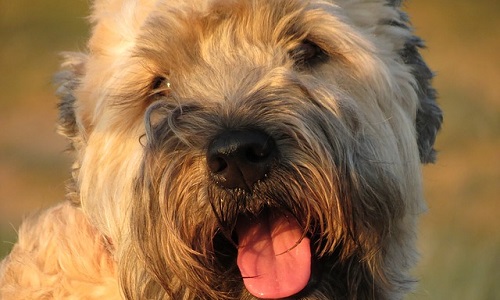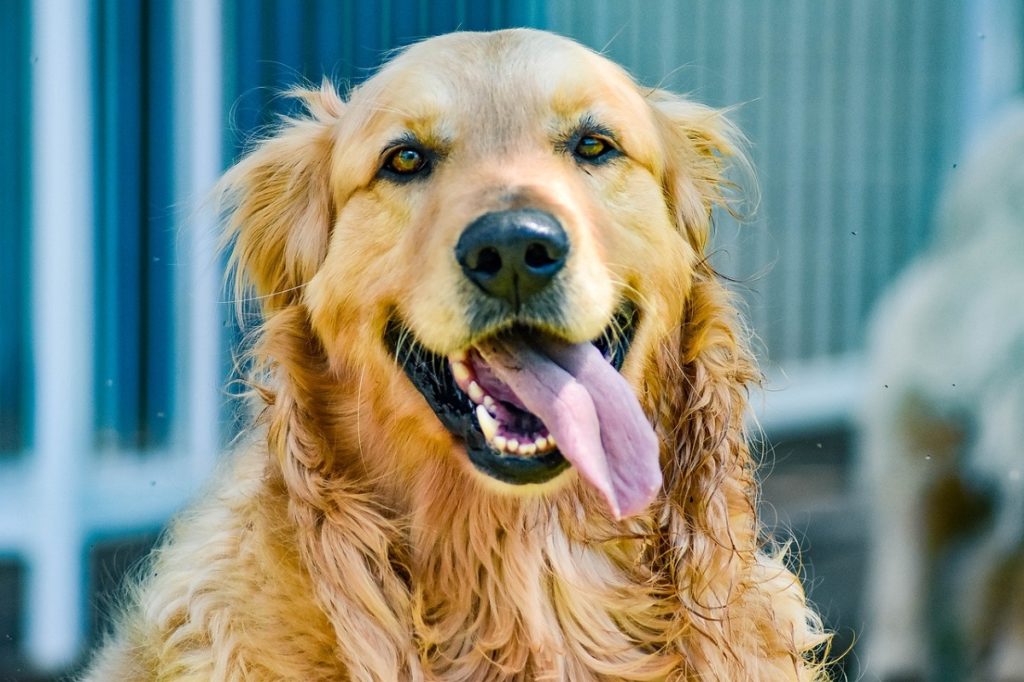For anyone lucky enough to call themselves a pet parent, it goes without saying that they want the very best for their fur babies – dogs aren’t just four-legged friends, but part of the family. Whether it’s a stomach virus, seasonal canine allergies, or something more serious, a pet owner never wants to see their faithful friends suffer. However, there are certain common health conditions that might be indicative of an underlying issue, and as pet owners, it’s important to remain aware of a canine’s overall well-being. Keeping this in mind, your dog’s dental health is just as important as it is for humans, and should therefore never be overlooked.
When it comes to halitosis in dogs, some people believe that just because it’s a dog, it’s normal for him to have bad breath. While it may simply be a build-up of bacteria in your pooch’s mouth from poor dental hygiene, persistent bad breath may be a sign that he’s suffering from other health problems related to his kidneys, liver function or gastrointestinal tract. In any case, chronic canine halitosis should be addressed right away and diagnosed by a trusted veterinarian. So then, what causes bad breath in a dog and how can it be fixed? This article will discuss the causes of bad breath in your dog, as well as treatment and prevention.
Some of the most common causes for bad breath in dogs may include:
- Periodontal Disease: A steady build-up of plaque can lead to periodontal disease, one of the leading causes of your pup’s bad breath. As bacteria multiplies in your dog’s mouth, it can initially result in halitosis; if left untreated, poor dental hygiene may cause gingivitis (gum disease). Advanced-stage canine periodontal disease is not only painful but dangerous, possibly resulting in tooth loss and even organ damage (such as the kidneys and heart).
- Teething: For anyone who’s owned a puppy or kitten, you are probably familiar with the unpleasant breath they have during teething. This is due to bacteria collecting at the gum line (where budding adult teeth are pushing out baby teeth); the build-up of bacteria often results in halitosis. Fortunately, “teething breath” naturally goes away after your pet is done teething. However, once they have their adult teeth, it’s imperative to incorporate regular tooth-brushing into your pooch’s daily routine to ensure optimal dental health.
- Oral Disease: While gum disease (gingivitis) may be one of the more common sources of your pal’s bad breath, there are other oral diseases that might be the culprit. Both cancerous and benign growths can cause oral masses, which can lead to foul-smelling breath. Another condition, known as gingival hyperplasia, results in abnormal gum growth; this disease creates deep pockets where bacteria thrives and (you guessed it) – leads to bad breath. Get into the habit of examining your dog’s mouth on a regular basis to inspect his teeth and gums for any abnormalities, and schedule annual veterinary check-ups, which should include an oral examination during your visit.
- Gastrointestinal Disease: Although it may not be as common as the other reasons we’ve listed so far, gastrointestinal disease and other issues may be behind your dog’s smelly breath. Your vet can properly determine whether or not your dog is suffering from an illness affecting his esophagus, stomach, or intestines, and advise next steps in the instance that he is sick.
- Metabolic Disease: Another catalyst for your dog’s bad breath may lie in certain metabolic diseases; it may not be as frequent a cause as others that have been discussed, but is worth mentioning. Specific toxins in the blood and a disruption in metabolic balance can lead to sour-smelling breath; this secondary symptom is often linked with canine kidney disease.
Canine Dental FAQs: Why Is My Dog’s Breath Bad?
 According to an article in Vet Street.com, research has shown that 80% of dogs will display signs of canine periodontal disease after the age of 3 years, with studies indicating it’s one of the most frequent causes of bad breath in pets. The bacteria in your pooch’s mouth eventually turns into a sticky build-up on his teeth and gums know as plaque, and can lead to gingivitis, a painful condition that results in inflammation of the gums. However, dental problems are not the same for dogs as they are for people: while humans experience tooth decay (a loss of calcium in the tooth enamel, resulting in painful cavities), tooth decay in dogs is actually a rare occurrence. The most common dental problems for dogs are the result of either fractured teeth or canine periodontal diseases. Read on for some frequently-asked questions concerning your dog’s dental health:
According to an article in Vet Street.com, research has shown that 80% of dogs will display signs of canine periodontal disease after the age of 3 years, with studies indicating it’s one of the most frequent causes of bad breath in pets. The bacteria in your pooch’s mouth eventually turns into a sticky build-up on his teeth and gums know as plaque, and can lead to gingivitis, a painful condition that results in inflammation of the gums. However, dental problems are not the same for dogs as they are for people: while humans experience tooth decay (a loss of calcium in the tooth enamel, resulting in painful cavities), tooth decay in dogs is actually a rare occurrence. The most common dental problems for dogs are the result of either fractured teeth or canine periodontal diseases. Read on for some frequently-asked questions concerning your dog’s dental health:
Q: What Are Symptoms Of Excess Plaque In My Dog’s Mouth?
A: There are certain red flags to keep an eye out for when routinely examining your dog’s mouth, including:
- Swollen or inflamed-looking gums; bleeding gums
- Discoloration of the teeth
- Tooth loss
- Chronic bad breath (halitosis)
- Pus inside the mouth (specifically around the teeth/gums)
If you notice any of these signs or symptoms, be sure to schedule an appointment with your vet, who can provide a thorough examination and determine the next course(s) of action, whether it includes a change in diet, implementing a dental care routine, or in extreme cases, surgery.
Q: Are Plaque and Tartar The Same?
A: Many people believe that plaque and tartar are the same, when in fact, they are not: while plaque is a soft colorless film that coats the teeth and gums (a result of the chemical breakdown of food in the mouth), tartar is what plaque becomes if not removed regularly – minerals from the saliva cause the plaque to harden, turning it into dental calculus (aka tartar). This yellow or brownish-colored deposit forms a strong bond to the tooth enamel, and may only be removed by a trained veterinary professional. If you notice any signs of tartar build-up, it’s important to have it professionally removed as soon as possible to prevent further canine periodontal disease.
Q: What Is Canine Gingivitis?
A: Gingivitis is due to excessive tartar build-up, which happens when you don’t brush your dog’s teeth regularly; if left untreated, it can lead to tooth and even bone loss/deterioration in the jaw and mouth. Humans can also undergo this periodontal disease as a consequence of poor dental hygiene. Below, the stages and signs of canine gingivitis:
- Early stages: bad breath; yellow or brown tartar build-up found on dog’s teeth
- Secondary stages: swollen gums; a red line running across your dog’s gums may also be noticeable
- Final stages: various forms of gum disease / possible tooth loss
Q: What Is Periodontal Disease In Dogs?
 A: When left untreated, gingivitis can lead to periodontal disease in dogs, which can result in serious health problems. This condition causes the dog’s gums to recede away from the tooth, leaving a space (also referred to as a ‘pocket’). These pockets easily trap bits of food, saliva and bacteria, and often become a breeding ground for infection. It is therefore imperative to treat any signs of canine periodontal disease before it advances any further, as it can destroy both gum and surrounding oral tissues.
A: When left untreated, gingivitis can lead to periodontal disease in dogs, which can result in serious health problems. This condition causes the dog’s gums to recede away from the tooth, leaving a space (also referred to as a ‘pocket’). These pockets easily trap bits of food, saliva and bacteria, and often become a breeding ground for infection. It is therefore imperative to treat any signs of canine periodontal disease before it advances any further, as it can destroy both gum and surrounding oral tissues.
Q: How Can I Tell If My Dog Has An Abscess?
A: While a qualified professional (such as your veterinarian) is the only person who can provide a definitive dental diagnosis, there are certain tell-tale signs to determine if your dog has an abscess, including:
- Visible pus around one or more of the dog’s teeth
- Swollen and red gums
- Dog displays visible signs of pain (wincing, whimpering, lethargic, etc.)
Q: Are Some Breeds More Prone To Dental Disease?
A: Although dogs of every breed and age can experience some form of dental condition throughout their lifetime, smaller and toy breeds are most prone to dental health problems. Unfortunately, small dog breeds often suffer from a condition known as ‘overcrowding’ of the teeth, which is simply a consequence of anatomy – i.e., having a smaller mouth. Overcrowding can potentially harm the teeth of a small dog, leading to an increase in plaque and other related dental issues, such as rapid plaque and tartar build-up. For owners of small or toy breeds, it’s essential to examine your dog’s teeth regularly and be mindful of his dental health – your vet can provide suggestions and advice for proper care and oral hygiene specially targeted for smaller breeds.
When It’s Time To See Your Vet
As we’ve covered, there are many reasons why your dog may have bad breath, ranging from everyday biological occurrences to serious health conditions and diseases. In any case, if you happen to notice a sudden change in your dog’s breath, be certain to contact your veterinarian immediately. Below is a list of symptoms indicative of serious health problems that require prompt medical attention:
- Sweet or ‘fruity’ breath: This may be a sign of canine diabetes (especially if your pet has been drinking water/urinating more often than he normally does).
- Breath that smells like urine: This may signal canine kidney disease.
- Sudden foul breath: If you notice your dog suddenly has very foul breath and is vomiting, lacks an appetite, and his gums or eyes appear jaundice (yellow), it might indicate problems with his liver.
Veterinary Checklist: What To Expect
When visiting a vet to discuss your dog’s bad breath, you can typically expect the following examination protocol:
- Questions about your dog’s health history: Typically, your veterinarian will ask routine questions regarding your dog’s condition in order to determine the history of his condition. In this case, specific questions may include when you first noticed the bad breath, if it has changed/gotten worse, and how your dog appears overall (e.g., general health, behavior, change in sleeping/eating habits, frequency of urination/elimination of bowels, and so on).
- Conducting a complete physical examination: Your vet will then proceed to perform a complete physical exam of your dog, paying special attention to the mouth. The doctor may require blood/stool/urine samples for lab analysis if deemed necessary.
- Administering an anesthetic evaluation: Although it may not be required during every visit, your vet will need to administer sedation to your pet in most cases so that they can adequately perform x-rays, a thorough tooth examination, and any other oral cavity evaluations that must be done.
- Providing a dental cleaning: As discussed, regular dental cleanings administered by a professional are a must to maintain your dog’s oral hygiene (and good breath). Unlike regular tooth-brushing, only a licensed professional veterinarian can perform such techniques as plaque removal and scaling (removal of tartar build-up), ultimately ensuring the optimal health of your dog’s teeth and gums.
- Obtaining samples for biopsy: There may be instances where your vet will need to take a tissue sample in the instance where an abnormality is found; this is most common in the case where your dog has an oral mass. Your vet will then send it to a lab for a biopsy of the tissue and determine the next steps of treatment, pending on the results.
Treatment For Your Dog’s Bad Breath: Your Vet’s Diagnosis
Depending on your veterinarian’s prognosis, you will know how to treat your dog’s bad breath and underlying health issues, if any. This may include the following scenarios:
- Plaque: In the instance where plaque is the reason for your dog’s stinky breath, your vet will likely advise a professional veterinary dental cleaning.
- Diet: If your vet determines your pooch’s funky breath is due to his diet, he may recommend a specially-formulated dog food. He may also advise to limit or completely omit table scraps or certain ‘people’ foods, as foods high in sugar or carbohydrates can cause plaque build-up (or worsen existing periodontal issues).
- Physiology: If your dog’s bad breath is the result of an underlying medical condition or disease (such as a gastrointestinal issue or any abnormalities relating to the heart, kidneys, lungs or liver), your vet will discuss other options of treatment.
 In addition to regular brushing, you may wish to discuss other ways in which you can take an active role in your dog’s oral hygiene – while keeping his bad breath at bay! Your vet can recommend plaque-reducing doggie treats, as well as water additives, which may help with your doggie’s off-putting breath. There may also be other natural alternatives worth exploring to protect your pooch’s oral health, such as specially-formulated dog supplements and homeopathic therapies. In any case, be sure to consult with your veterinarian before administering any type of treatment to your pet
In addition to regular brushing, you may wish to discuss other ways in which you can take an active role in your dog’s oral hygiene – while keeping his bad breath at bay! Your vet can recommend plaque-reducing doggie treats, as well as water additives, which may help with your doggie’s off-putting breath. There may also be other natural alternatives worth exploring to protect your pooch’s oral health, such as specially-formulated dog supplements and homeopathic therapies. In any case, be sure to consult with your veterinarian before administering any type of treatment to your pet
Protect Your Dog’s Oral Hygiene For Life
Because your dog’s overall health is so closely linked to his dental health, it is of the utmost importance to schedule regular veterinary exams, in addition to professional dental cleanings. However, good oral hygiene starts at home: by incorporating a daily routine of brushing your dog’s teeth into your schedule, you can fight the battle against plaque – and ultimately help in the prevention of permanent tooth decay, tooth loss and gum disease, as well as secondary health issues associated with canine periodontal disease.
Sources:
“7 Reasons Your Dog Has Bad Breath.” PetMD, Accessed 16 Oct. 2018. www.petmd.com/dog/slideshows/7-reasons-your-dog-has-bad-breath.
Burke, Anna. “Get Rid of That Stanky Dog Breath.” American Kennel Club, 12 Dec. 2016, Accessed 16 Oct. 2018. www.akc.org/expert-advice/health/stanky-dog-breath/.
“My Dog Has Bad Breath. How Can I Treat It?” Vetstreet, Jan. 2014, Accessed 16 Oct. 2018. www.vetstreet.com/care/my-pet-has-bad-breath-whats-happening-to-cause-it.
“Dog Plaque Dangers.” Purina Dentalife, Accessed 16 Oct. 2018. www.purina.co.uk/dog/dentalife/dental-care/dangers-of-too-much-plaque.




